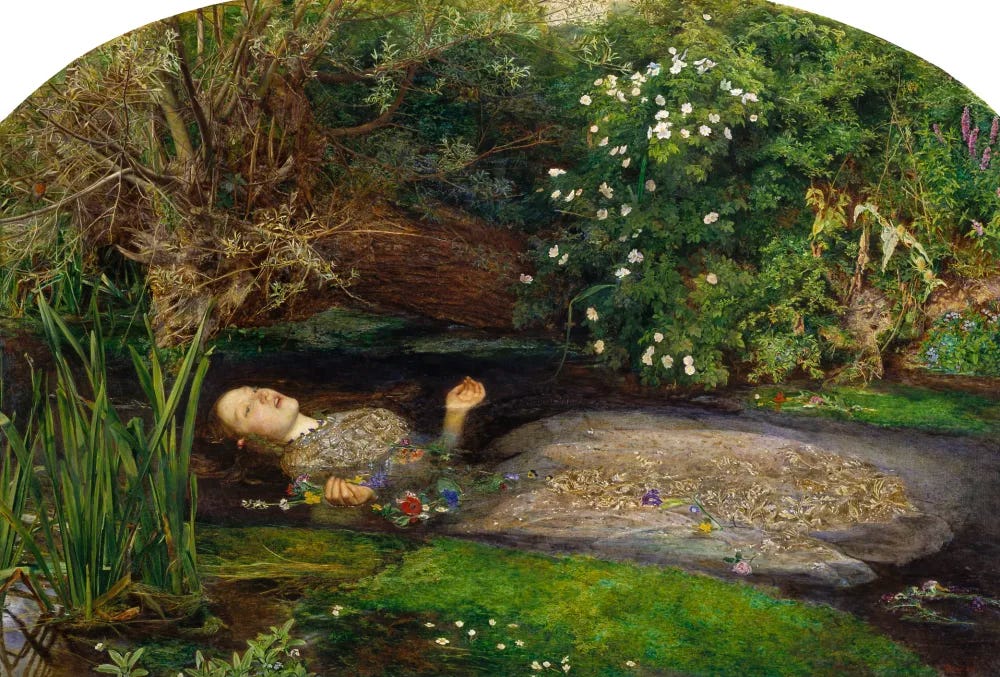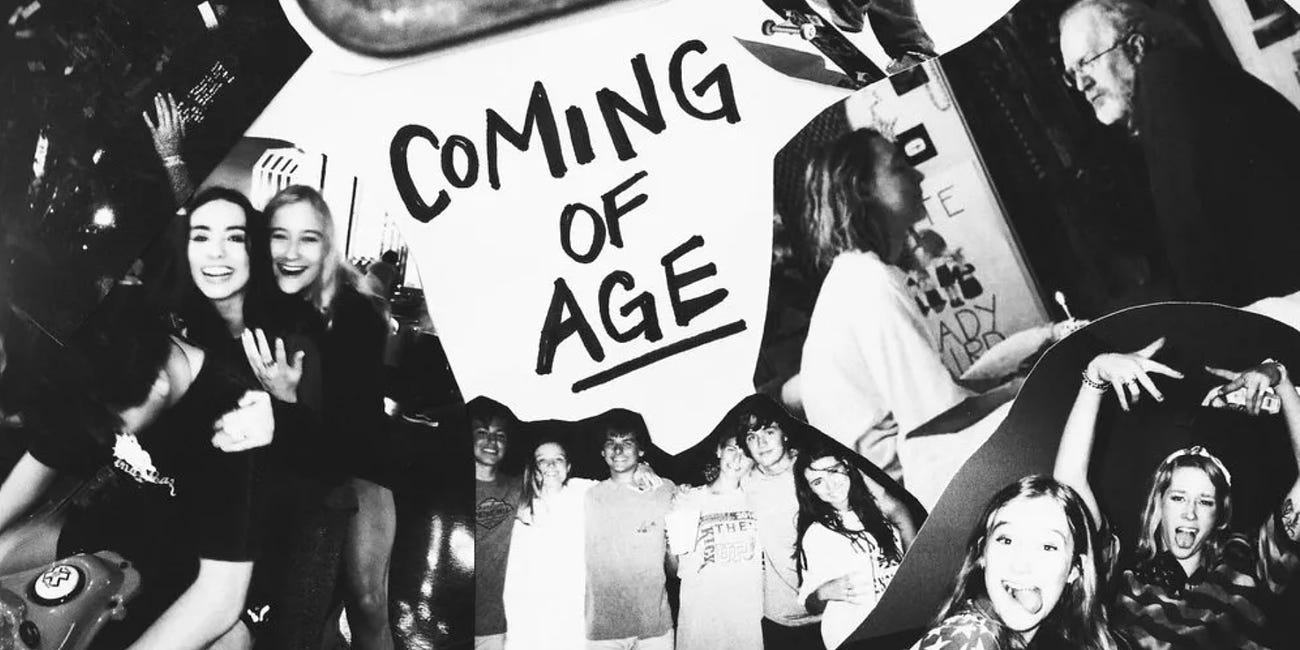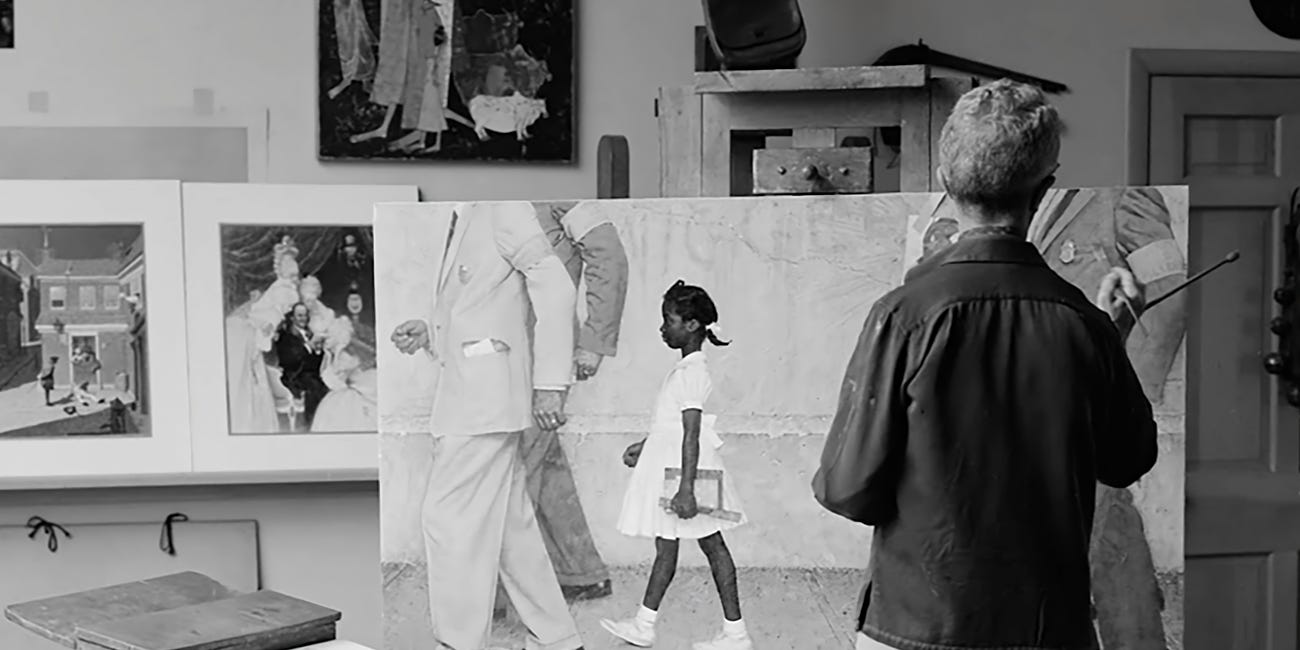To Be or Not to Be: 'Ophelia' and (More) Tension of Becoming
A brief examination of John Evert Millais’s iconic 'Hamlet'-inspired painting
I’ve written quite a bit lately about the liminal space that exists between what was and what will be (“The 'Tension of Becoming' in Coming-of-Age Cinema” and “The ‘Tension of Becoming’ at the End of the World”). In fact, I suppose it would be fair to say that liminal spaces have been on my mind a great deal; I feel this in my own life every time I read the news, speak to any of my friends in the environmental sciences, or contend with the extreme weather outside my door. And so, for this 5AM StoryTalk bonus feature, I want to discuss a piece of fine art that embodies the idea of liminal space in my mind:
John Evert Millais’s painting Ophelia (1851-2).
Millais’s painting is one of the most haunting pieces of art I’ve encountered in person (it hangs at the Tate Britain). The 762 × 1118 mm oil-on-canvas painting depicts a scene described in Shakespeare’s Hamlet, Act IV, Scene vii, in which the character of Ophelia is driven mad by the murder of her father by her lover Hamlet and, falling into a stream, drowns.
There, on the pendent boughs her coronet weeds
Clambering to hang, an envious sliver broke;
When down her weedy trophies and herself
Fell in the weeping brook. Her clothes spread wide,
And, mermaid-like, awhile they bore her up;
Which time she chanted snatches of old tunes,
As one incapable of her own distress,
Or like a creature native and indued
Unto that element; but long it could not be
Till that her garments, heavy with their drink,
Pull'd the poor wretch from her melodious lay
To muddy death.
In other words, Ophelia kills herself.
But take a look at Millais’s painting of this scene…which actually precedes the events described here by a few important moments. Because in this painting, Ophelia, Hamlet’s lady love, has not yet killed herself. She’s still alive, about to drown herself.
Which also means this is the moment she’s making the final decision to die.
She’s both literally and metaphorically hovering between different states, one thing already becoming the next.
That sense of transition is one of the reasons why I believe it has resonated so much with viewers over the years.
Ask yourself: how does the meta/physical action make you feel? Understanding this experience and how to convey it in your own work, to create tension — even existential tension — in a moment that otherwise feels static, will provide you with a valuable storytelling tool.
I’ll close with a fun fact related to the painting of Ophelia:
The model, Elizabeth Siddal, was a favorite of the Pre-Raphaelites and later married Rossetti. Millais required her to pose over a four-month period in a bath full of water kept warm by lamps positioned underneath it. I repeat: four months. Except on one occasion, the lamps went out and Siddal caught a severe cold. Her father had to threaten Millais with legal action until he agreed to pay the doctor's bills. Whoops.
If this article added anything to your life but you’re not up for a paid subscription, please consider buying me a “coffee” so I can keep as much of this newsletter free as possible for the dreamers who couldn’t afford it otherwise.
If you enjoyed this particular article, you might also dig these:







